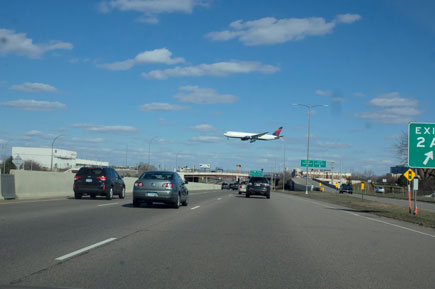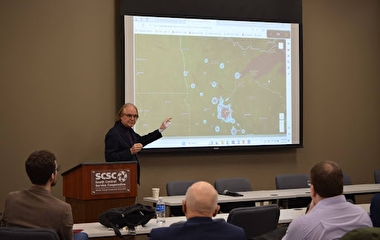An increasingly fast-paced and globally connected economy is changing the rules of industrial competition and business location as we know it, making major airports key nodes in global production and enterprise systems. At the luncheon presentation of the 2019 CTS Transportation Research Conference, John Kasarda described the Twin Cities’ potential to leverage the aerotropolis model and deliver competitive advantages to firms and municipalities in the region and state.
“The aerotropolis is an urban form where cities are built around airports, speedily connecting time-sensitive suppliers, manufacturers, distributors, and business people to distant customers, clients, and marketplaces,” said Kasarda, director of the Center for Air Commerce at the University of North Carolina’s Kenan-Flagler Business School and CEO of Aerotropolis Business Concepts LLC.
The new business environment at the center of the aerotropolis model is built around speed. “Economies of speed now supersede economies of scale and scope,” Kasarda added. “It’s no longer the big eating the small, but the fast eating the slow.” Factors feeding into this new fast-paced reality include the global sourcing and sales of products and services, just-in-time manufacturing and delivery, miniaturization and digitization of medical devices and smart electronics, and market turbulence and uncertainty.
The aerotropolis moves a region up the commercial and industrial value chain by recognizing that time is not just a cost, but also a currency for many business people and businesses. This is especially true in the rapidly growing medical sector, where speed is especially important for biologics, vaccines, and other highly perishable specialty medicines as well as surgical implants and other medical devices for which time-definite delivery to distant sites is critical.
According to Kasarda, the Twin Cities region currently faces four challenges in this new business environment. First, the area needs continued growth in the life sciences, medical device, and medical technology sectors as well as corporate headquarters and other high-value business services sectors. Additionally, these new economy sectors must be able to effectively compete with other metro areas in the decades ahead, and job creation goals must be met.
“Finally, development around and outward from the Minneapolis–Saint Paul International Airport must be economically efficient, attractive, and environmentally sustainable in order to present a positive first and last impression of the city while becoming an enduring magnet for new-economy workplaces and workers,” Kasarda said. “How these interwoven challenges are met will go a long way in determining the economic future of the region and the entire state.”
The Twin Cities region possesses all the ingredients needed to develop a world-class aerotropolis, Kasarda said. These include a major international airport hub between Asia and Europe, a high concentration of corporate headquarters, excellent universities and transportation research centers, aviation-oriented healthcare services and medical device companies, plans to improve multimodal airport access and regional surface transportation systems, and world-famous medical and retail tourism draws.
“The bottom line is that the fastest, best-connected firms and places will win in the decades ahead,” Kasarda said. “Minnesota and the Twin Cities are currently at an economic crossroads in which strategic planning and development initiatives will determine the direction it will go in terms of business mix, investment, growth, job creation, and overall economic prosperity—and creating a world-class Minneapolis–Saint Paul aerotropolis would provide a strong competitive advantage.”



